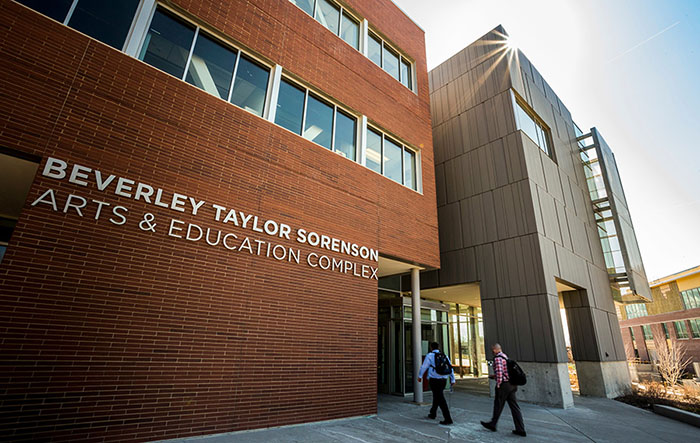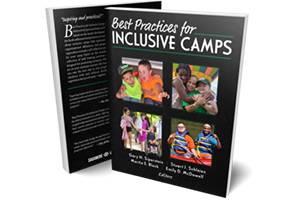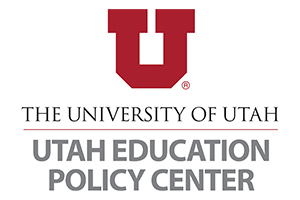What is UEPC?
The Utah Education Policy Center (UEPC) is an independent, non-partisan research center at the University of Utah. Since 1990, we have collaborated with education leaders, policymakers, and organizations in Utah and across the country to advance evidence-based solutions that strengthen systems and improve outcomes. We conduct rigorous research and evaluation and provide expert technical assistance and professional learning across early childhood, K–12, and higher education. The UEPC team translates research into actionable insights that support informed decision-making, continuous improvement, and meaningful change.
Who We Are
We are committed research and practitioner scholars. We collaborate with colleagues, partners, and decision-makers to enhance capacity building. We expand the use of research and evaluation to improve the quality and effectiveness of educational policy, practices, and leadership in public schools and higher education.

Featured Projects

Bright Spots in Special Education
Characteristics of schools that have successfully created inclusive environments and produced positive outcomes for students with disabilities.

Utah Full-Day Kindergarten: Literacy Growth, Future Opportunities, and Needed Investments
Learn about UEPC’s findings on the impact of full-day kindergarten on students’ reading achievement and academic progress through 3rd grade.

Math Learning Software Use and Personalized, Competency-Based Instructional Strategies
UEPC investigated what personalized, competency-based instructional strategies teachers utilized, including math learning software.
UEPC Updates
-

Publication Announcement
This book provides comprehensive guidelines and case studies for creating inclusive camp programs, emphasizing the benefits and strategies for integrating campers of all abilities.
Monday, October 02, 2023 07:00 AM
-

STEM Landscape Report
This interactive dashboard offers a comprehensive overview of STEM policies, education, and outcomes in Utah from 1999 to 2019, highlighting variations by demographics and comparing state data to national trends.
Monday, November 30, 2020 07:00 AM
-

Upcoming Research Studies: STEM, CTE, and Teachers
This announcement highlights upcoming research studies on STEM education, career and technical education pathways, and educator retention in Utah, focusing on factors influencing student and teacher outcomes.
Wednesday, July 01, 2020 07:00 AM
Partnering for Impact
Pre K12 Education
Higher Education
Education Affiliated Organizations
We partner with educational organizations such as state offices of education, districts, schools, institutions of higher education, community-based organizations, and other education affiliated organizations. Our repeat partners and clients that use us for research, evaluation, leadership development, professional learning or school improvement.
“The entire meeting really was beneficial…It was especially helpful talking about data in relation to setting realistic goals, reviewing the continuous quality improvement cycle, and review of the logic model for program support as well as internal use for our organization. I loved the slide "Planning Time with Program Teams" for questions that can be asked to programs. Again this was an awesome presentation!”
~ Participant in 2023 SMART Goals and Logic Model Training Session for Out-of-School Time programs
“I have gone to a lot of wonderful conferences, but this was by far my favorite sessions attended so far! I really liked the breakdown and that y’all [presenters] made yourself available for follow up.”
~ Participant in 2023 Utah Afterschool Network Statewide Jumpstart Conference
“Through LIFT’s intentional design our school team has increased our instructional leadership capacity and enhanced our best practices by providing a space for collaboration with other schools. Every time I attend a LIFT session, I leave with action steps ready to be implemented the next day as well as learned lifelong practices. Guided by evidenced based research, the UEPC team provides the best professional learning I’ve ever attended. I always leave wanting more!”
~ Meghan Merideth, M.Ed., Head of School, Utah Virtual Academy
“[...] We are so happy that we chose to work with UEPC. They worked with us to truly understand what was important to Greenwood and then helped us build a plan that made sense for us. They have been so supportive of our vision, mission and goals as a school. They are always willing to offer support any time we need it whether it be a phone call, an in person visit, a professional learning class for teachers, or tools that will help us with what we are grappling with. We have loved working with UEPC and highly recommend them!”
~ Tracey Nelson, School Director, GreenWood Charter School
“Thank you for trusting us to come and learn and implement--The jobs we do are intense, and busy, and critical. Knowing that this academy was not ‘just one more thing,’ but a valuable piece of moving the work forward.”
~ Participant, Salt Lake City School District Leadership Academy
“Thank you for making LIFT a positive experience. I leave feeling rejuvenated instead of defeated! The time for action planning is crucial to complete prior to returning to the whirlwind of the school, so please keep that as part of the experience.”
~ Participant, LIFT
“I have felt empowered and like my voice matters. This experience has made me push myself and seek new opportunities for professional growth.”
~ Participant, Salt Lake City School District Leadership Academy
“I am so grateful for this opportunity to learn these principles from such knowledgeable people. I so appreciated the nurturing care that was given as I was learning and felt no judgment when I felt overwhelmed or inadequate. Great instructors!”
~ Participant, Salt Lake City School District Leadership Academy
COLLABORATE WITH US
We support the work of local schools and districts through research and technical assistance that builds confidence, cultivates a professional leader identity, and develops adaptive leaders.
Our team has extensive experience in education, leadership, policy analysis, evaluation, research, and professional development.




